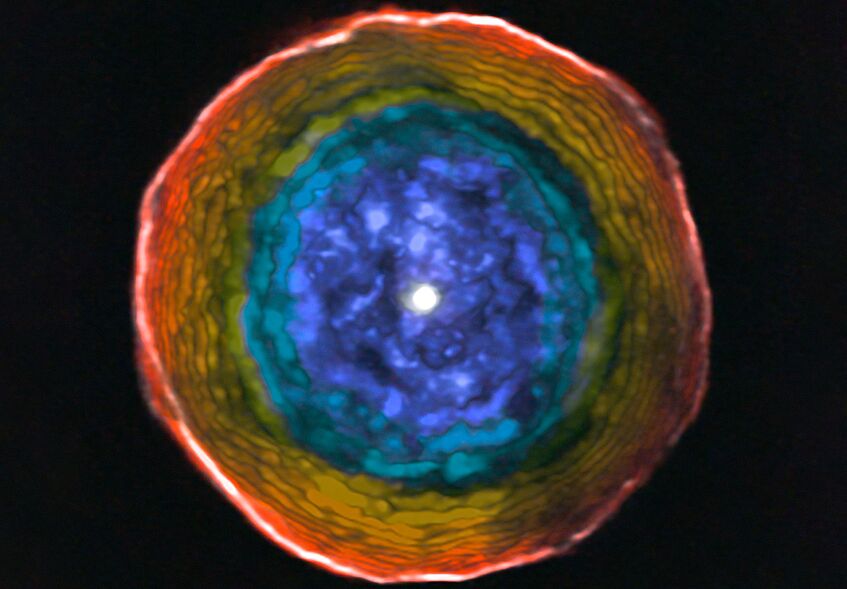Late Stages of Stellar Evolution
Group Leader: Franz Kerschbaum

Expanding carbon monoxide envelope around the giant star U Antliae (Credit: Kerschbaum et al., ESO/Alma)
Late Stages of Stellar Evolution
Sun-like stars become pulsating red giants during the late stages of their evolution, forming expanding gas and dust envelopes that subsequently enrich interstellar space with heavy elements and solids.
Research focus
- Stellar winds: How can we understand the structure and composition of the extended stellar envelopes? What factors are responsible for their diverse forms? What do the dust and gas clouds of those stars - formed at a rate of up to several Earth masses per year - consist of? Interferometry with ESO's ALMA radio telescope and space telescopes help us to find answers to these questions.
- Driving mechanisms: What drives the "stellar winds" of the red giants inside? What influence do the dynamic stellar atmospheres have on mass loss? What role do stellar companions and planets play? High-resolution interferometry with ESO's Very Large Telescope Interferometer literally sheds light on the subject.
- Stellar population: The giant stars we study are also an important component of our Milky Way and other galaxies and provide, for example, valuable information about their star formation history and chemical evolution. The GAIA space mission and Earth-based telescopes allow us to systematically study large samples.
